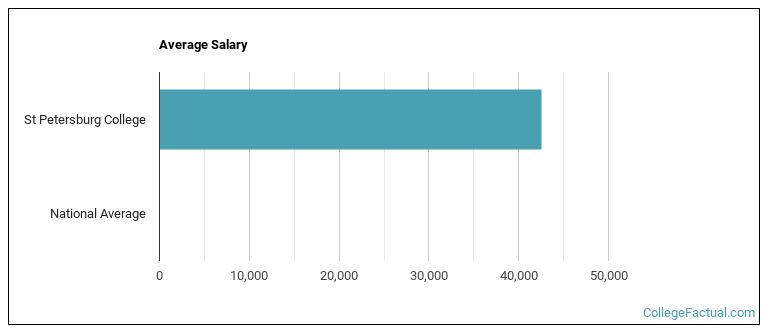 by our College Data Analytics Team
by our College Data Analytics TeamCollege Factual analyzes over 2,000 colleges and universities in its annual rankings and ranks them in a variety of ways, including most diverse, best overall quality, best for non-traditional students, and much more.
St Petersburg College was awarded 24 badges in the 2025 rankings. The highest ranked major at the school is nursing.
Explore the best ranked schools for the programs you are most interested in.
According to College Factual's 2025 analysis, SPC is ranked #473 out of 2,152 schools in the nation that were analyzed for overall quality. This is an improvement over the previous year, when SPC held the #1,103 spot on the Best Overall Colleges list.
SPC also holds the #23 spot on the Best Colleges in Florida ranking.
As long as you meet basic requirements, you should not have any trouble getting into St Petersburg College since the school has an open admissions policy. Still, be sure to submit any requested materials and that your application is completed in full.
The student to faculty ratio at St Petersburg College is 22 to 1, which is high when compared to the national average of 15 to 1. This may indicate that some of your classes will be larger in size than they would be at other schools. However, upper level classes will probably be smaller.
Another measure that is often used to estimate how much access students will have to their professors is how many faculty members are full-time. The idea here is that part-time faculty tend to spend less time on campus, so they may not be as available to students as full-timers.
The full-time faculty percentage at St Petersburg College is 27%. This is lower than the national average of 47%.
During the 2017-2018 academic year, there were 26,430 undergraduates at SPC with 8,152 being full-time and 18,278 being part-time.
The net price is calculated by adding tuition, room, board and other costs and subtracting financial aid.Note that the net price is typically less than the published for a school. For more information on the sticker price of SPC, see our tuition and fees and room and board pages.
It's not uncommon for college students to take out loans to pay for school. In fact, almost 66% of students nationwide depend at least partially on loans. At SPC, approximately 15% of students took out student loans averaging $5,946 a year. That adds up to $23,784 over four years for those students.

See which majors at St Petersburg College make the most money.
Get more details about the location of St Petersburg College.

Contact details for SPC are given below.
| Contact Details | |
|---|---|
| Address: | 244 Second Ave. N, St. Petersburg, FL 33701 |
| Phone: | 727-341-4772 |
| Website: | www.spcollege.edu/ |
| Most Popular Majors | Bachelor’s Degrees | Average Salary of Graduates |
|---|---|---|
| Liberal Arts General Studies | 2,875 | NA |
| Nursing | 487 | $80,787 |
| Information Technology | 437 | $54,560 |
| Business Administration & Management | 430 | $46,632 |
| Criminal Justice & Corrections | 174 | NA |
| Health & Medical Administrative Services | 156 | NA |
| Allied Health Professions | 138 | NA |
| Other Education | 116 | $35,491 |
| Computer Information Systems | 109 | NA |
| Fire Protection | 108 | NA |
Online learning is becoming popular at even the oldest colleges and universities in the United States. Not only are online classes great for returning adults with busy schedules, they are also frequented by a growing number of traditional students.
In 2022-2023, 15,668 students took at least one online class at St Petersburg College. This is a decrease from the 18,654 students who took online classes the previous year.
| Year | Took at Least One Online Class | Took All Classes Online |
|---|---|---|
| 2022-2023 | 15,668 | 10,005 |
| 2021-2022 | 18,654 | 13,254 |
| 2020-2021 | 22,959 | 18,903 |
| 2018-2019 | 16,882 | 10,068 |
If you’re considering St Petersburg College, here are some more schools you may be interested in knowing more about.
Curious on how these schools stack up against SPC? Pit them head to head with College Combat, our free interactive tool that lets you compare college on the features that matter most to you!
Footnotes
*The racial-ethnic minorities count is calculated by taking the total number of students and subtracting white students, international students, and students whose race/ethnicity was unknown. This number is then divided by the total number of students at the school to obtain the racial-ethnic minorities percentage.
References
More about our data sources and methodologies.